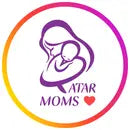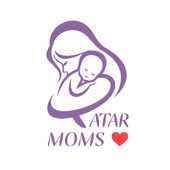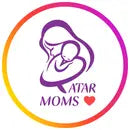From the moment a baby is born, his little body begins to acquire basic motor skills that will enable him to explore the world around him. From holding the head to crawling and walking, every little movement is a big step toward independence and growth. In this article, we will take you on a journey through the stages of infant motor development, during which we will review how parents can support their children on this exciting journey, and what signs should be monitored to ensure healthy and balanced growth.
Get ready to introduce yourself to the world of your baby's first movements, and discover how their baby steps can lead you to unforgettable moments of joy and pride.
In this article, we will focus on the stages of infant motor development over the course of a year.
Stages of infant motor development in the first and second months
In the first and second months
the infant is at the beginning of his motor journey, and this period is characterized by rapid growth and major changes. At birth, a young baby is surrounded by a completely new environment and must slowly adapt to it. At this stage, movements are often simple and uncoordinated, as the infant begins to develop the ability to control his muscles.
During the first month, you may notice that your baby tries to raise his head for short periods when placed on his tummy. These movements are considered a first step towards strengthening the neck and shoulder muscles. He may also move his limbs randomly, which helps him develop his muscles.
By the second month, the infant becomes better able to control his head movements, and may be able to lift it more stably for longer periods when lying on his stomach. As he begins to develop better eye-hand coordination, you may notice him trying to approach toys or colorful objects that interest him.
It is important at this stage that parents provide a safe and stimulating environment for the child, including sufficient time to spend some tummy time, as this helps promote muscle growth and improve motor coordination.
Stages of infant motor development in the third month
In the third month, the infant begins to noticeably develop his motor abilities, as his movements become more coordinated and effective. During this period, the child has better control of his head and neck, and is able to raise his head stably when lying on his stomach. These movements help strengthen the neck and shoulder muscles, which is an important foundation for future motor skills.
He is also able to grasp toys and objects that interest him at this stage, and the child becomes more interactive with his environment. You may notice an increase in smiles and laughter, as he responds to the sounds and people around him. Parents can promote this development by providing an environment rich in stimuli, such as colorful toys and cheerful sounds, and spending sufficient tummy time to promote muscle growth.
Remember that every child develops at a different pace, so it is important to monitor your infant’s development periodically and ensure that he is provided with the necessary support at this important stage in his life.
Stages of infant motor development in the fourth month
The fourth month of the child’s development witnesses significant motor development, as he becomes stronger and more coordinated in his movements. At this stage, the baby is able to stably raise his head and chest while lying on his stomach, using his arms to support himself. These movements contribute to strengthening the muscles of the upper body, and are considered an important step towards crawling in the coming months.
In addition, the infant begins to show new skills in using his hands. You may notice that he is able to grasp and transfer objects from one hand to another, and he may begin to put his hands in his mouth as a way to explore the world around him. These activities contribute to developing eye-hand coordination, and enhance the strength of the muscles of the hands and fingers.
During this period, the child becomes more aware of his surroundings and more interactive with the people around him. He may start making different sounds in response to being talked to, and smiling at familiar voices and faces. Parents can support this development by constantly talking to the child, and encouraging him to explore safe toys and objects that he can hold and interact with.
Stages of infant motor development in the fifth and sixth months
In the fifth and sixth months
the infant reaches new stages in his motor development, as he becomes more able to control his body and more coordinated in his movements. At this stage, the child begins to sit alone for short periods without support, which enhances the strength of the back and abdominal muscles.
During the fifth month, the infant is able to roll from his stomach to his back and vice versa. This new skill enables him to explore his environment further and enhances his ability to navigate and move. He also becomes more adept at using his hands.
By the sixth month, the infant's motor abilities develop further. He can now sit still for longer periods without support, and may start trying to crawl or move towards things that interest him. These attempts reflect an increase in muscle strength and eye-hand-feet coordination. Parents can promote this development by encouraging the child to play with toys that require movement, such as small balls and toys that make sounds when touched.
Stages of infant motor development from the seventh month to the tenth month
In the period between the seventh and ninth months
the infant makes significant progress in his motor development, as he begins to acquire more strength and skills that enhance his independence and movement. During this stage, the baby becomes more active and exploratory, trying to move around in new and creative ways.
At seven months, the baby often begins to constantly try to crawl or roll to reach objects that interest him. Some babies may begin crawling on their stomach using their arms and legs to propel themselves forward, while others may progress to crawling on hands and knees.
As the eighth month enters, the child begins to try to stand with the help of furniture or parents, using his hands to support himself during attempts to stand. These movements help strengthen the leg muscles and prepare them for the first steps.
In the ninth and tenth months, the baby becomes more skilled at moving around and crawling more quickly and efficiently. You may also notice that he begins to try to move from a crawling position to a sitting position and vice versa, which reflects a significant improvement in coordination and balance.
Stages of infant motor development from the eleventh month until reaching one year
As the eleventh month enters, the infant begins to attempt to stand on his own for short periods, and may attempt to take side steps while holding on to furniture, which are important preliminary steps to independent walking.
In the twelfth month, or when the baby is approaching the completion of his first year, he may begin to take his first steps without support, which is considered a major achievement in his motor development. Some babies may begin to walk on their own, while others may still prefer to move around by crawling or side-stepping. This stage is characterized by constant exploration and movement, as the child learns how to balance and move around more confidently.
It is important at this stage that parents ensure that they provide a safe and stimulating environment for the child, while providing continuous support and encouragement. Parents can promote this development with toys that encourage standing and walking, such as strollers that the child can push. The child should also be closely monitored to ensure his safety during his new motor attempts.
An infant's motor development is an amazing journey full of small accomplishments that fill parents' hearts with joy and pride. From lifting the head to walking, each stage contributes to building the foundation for the child's physical and mental development. By providing support, encouragement and a safe environment, parents can help their children achieve their full potential in motor development. Remember that every child is unique and develops at his own pace, so celebrate every progress, no matter how small, as these moments form unforgettable memories in your parenting journey.
If you want more about motherhood and child topics, you can check out the Qatar Moms blog. You can also explore our extensive motherhood collections of School Supplies, Clothing Essentialls, and Baby Feeding Bottles, Diapering Changing Essentials with Baby Carriers for everything you need for your little one at Qatar Moms Store
 FREE DELIVERY FOR ORDERS ABOVE 100 QAR
FREE DELIVERY FOR ORDERS ABOVE 100 QAR DELIVERY WITHIN 3 HOURS
DELIVERY WITHIN 3 HOURS APPLE PAY AND CARD PAYMENT AVAILABLE
APPLE PAY AND CARD PAYMENT AVAILABLE



